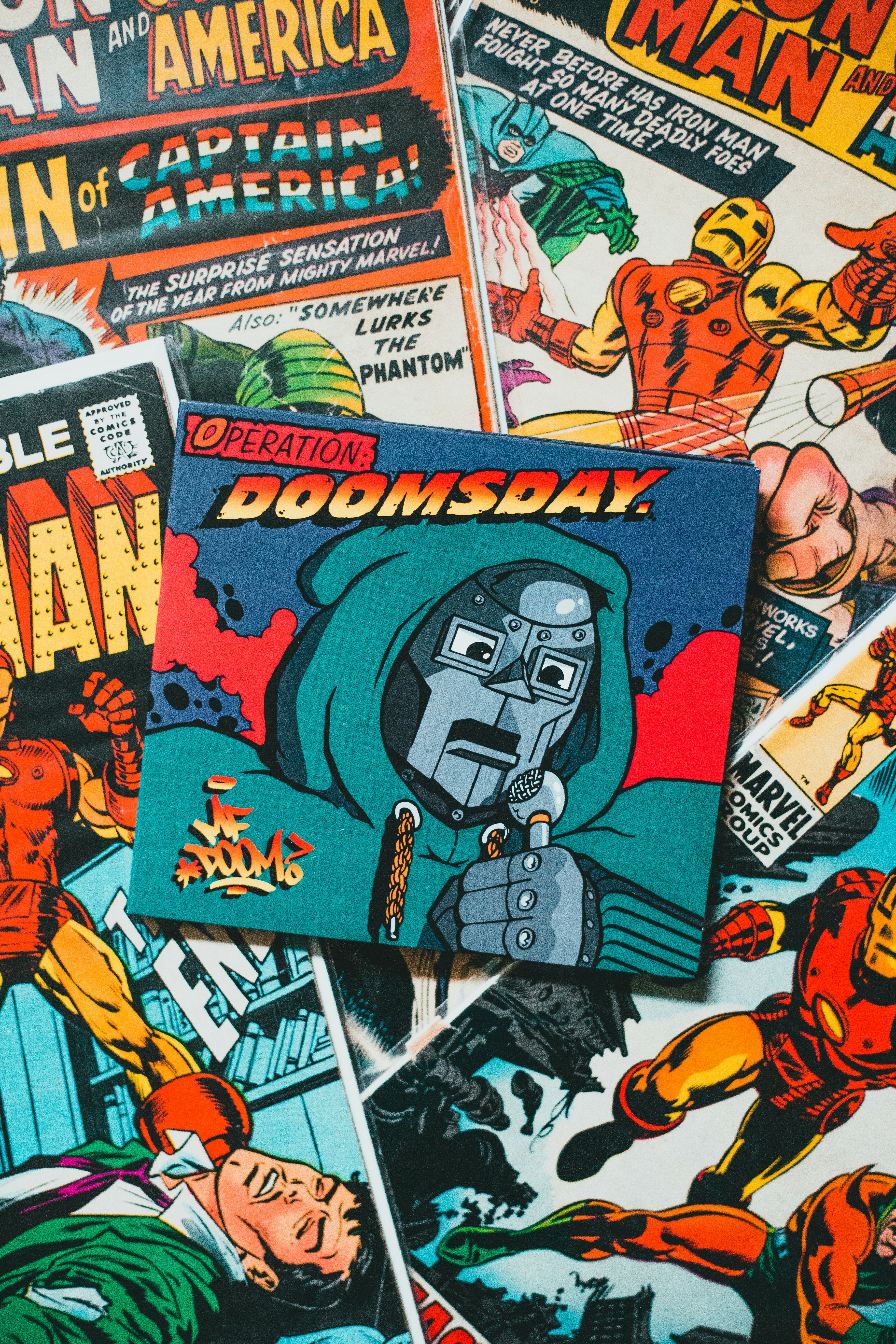5 Common Brand Identity Mistakes and How to Avoid Them
5 Common Brand Identity Mistakes and How to Avoid Them



Inconsistent Visuals Across Platforms
Your brand identity is the first impression your business makes, and it’s often the deciding factor for potential customers. Yet, many businesses unintentionally undermine their brand by making avoidable mistakes. Let’s dive deeper into five common pitfalls—and how to sidestep them to create a strong, lasting identity.
Nothing erodes trust faster than a brand that looks different across its website, social media, packaging, and advertising. Inconsistent use of logos, colors, and typography confuses your audience and makes your brand appear unprofessional.
Why This Happens:
Lack of a cohesive brand style guide.
Using "quick fixes" for assets, such as resizing logos incorrectly.
Relying on different people or agencies without a central point of reference.
How to Avoid It:
Develop a Style Guide: Include rules for logo placement, color codes, typography, and image guidelines.
Create Templates: Pre-designed templates for social media, presentations, and ads ensure consistency.
Stick to Approved Files: Always use high-resolution, properly scaled versions of your logo and visuals.
Pro Tip: Use tools like Canva for consistent templates or hire a designer to create custom, reusable assets for your team.
Your brand identity is the first impression your business makes, and it’s often the deciding factor for potential customers. Yet, many businesses unintentionally undermine their brand by making avoidable mistakes. Let’s dive deeper into five common pitfalls—and how to sidestep them to create a strong, lasting identity.
Nothing erodes trust faster than a brand that looks different across its website, social media, packaging, and advertising. Inconsistent use of logos, colors, and typography confuses your audience and makes your brand appear unprofessional.
Why This Happens:
Lack of a cohesive brand style guide.
Using "quick fixes" for assets, such as resizing logos incorrectly.
Relying on different people or agencies without a central point of reference.
How to Avoid It:
Develop a Style Guide: Include rules for logo placement, color codes, typography, and image guidelines.
Create Templates: Pre-designed templates for social media, presentations, and ads ensure consistency.
Stick to Approved Files: Always use high-resolution, properly scaled versions of your logo and visuals.
Pro Tip: Use tools like Canva for consistent templates or hire a designer to create custom, reusable assets for your team.
Your brand identity is the first impression your business makes, and it’s often the deciding factor for potential customers. Yet, many businesses unintentionally undermine their brand by making avoidable mistakes. Let’s dive deeper into five common pitfalls—and how to sidestep them to create a strong, lasting identity.
Nothing erodes trust faster than a brand that looks different across its website, social media, packaging, and advertising. Inconsistent use of logos, colors, and typography confuses your audience and makes your brand appear unprofessional.
Why This Happens:
Lack of a cohesive brand style guide.
Using "quick fixes" for assets, such as resizing logos incorrectly.
Relying on different people or agencies without a central point of reference.
How to Avoid It:
Develop a Style Guide: Include rules for logo placement, color codes, typography, and image guidelines.
Create Templates: Pre-designed templates for social media, presentations, and ads ensure consistency.
Stick to Approved Files: Always use high-resolution, properly scaled versions of your logo and visuals.
Pro Tip: Use tools like Canva for consistent templates or hire a designer to create custom, reusable assets for your team.






Poor Font Choices
Typography can elevate or ruin your brand. Fonts that are hard to read, clash stylistically, or are overused (looking at you, Comic Sans and Papyrus) can dilute your message and make your brand look amateurish.
Why This Happens:
Choosing fonts based on personal preference rather than brand relevance.
Using too many fonts, leading to visual chaos.
Neglecting readability for stylistic flair.
How to Avoid It:
Choose 1-2 Complementary Fonts: One for headlines and another for body text. Add an optional accent font for highlights.
Prioritize Readability: Make sure fonts are legible at all sizes, especially for web and mobile screens.
Stay On-Brand: Select fonts that align with your brand’s personality. For example, a modern sans-serif might suit a tech startup, while a vintage script might fit a boutique.
Pro Tip: Tools like Google Fonts or Adobe Fonts let you preview how fonts look in different combinations and applications.
Typography can elevate or ruin your brand. Fonts that are hard to read, clash stylistically, or are overused (looking at you, Comic Sans and Papyrus) can dilute your message and make your brand look amateurish.
Why This Happens:
Choosing fonts based on personal preference rather than brand relevance.
Using too many fonts, leading to visual chaos.
Neglecting readability for stylistic flair.
How to Avoid It:
Choose 1-2 Complementary Fonts: One for headlines and another for body text. Add an optional accent font for highlights.
Prioritize Readability: Make sure fonts are legible at all sizes, especially for web and mobile screens.
Stay On-Brand: Select fonts that align with your brand’s personality. For example, a modern sans-serif might suit a tech startup, while a vintage script might fit a boutique.
Pro Tip: Tools like Google Fonts or Adobe Fonts let you preview how fonts look in different combinations and applications.
Typography can elevate or ruin your brand. Fonts that are hard to read, clash stylistically, or are overused (looking at you, Comic Sans and Papyrus) can dilute your message and make your brand look amateurish.
Why This Happens:
Choosing fonts based on personal preference rather than brand relevance.
Using too many fonts, leading to visual chaos.
Neglecting readability for stylistic flair.
How to Avoid It:
Choose 1-2 Complementary Fonts: One for headlines and another for body text. Add an optional accent font for highlights.
Prioritize Readability: Make sure fonts are legible at all sizes, especially for web and mobile screens.
Stay On-Brand: Select fonts that align with your brand’s personality. For example, a modern sans-serif might suit a tech startup, while a vintage script might fit a boutique.
Pro Tip: Tools like Google Fonts or Adobe Fonts let you preview how fonts look in different combinations and applications.
Neglecting Your Target Audience
Designing a brand identity that appeals to you instead of your audience is a common misstep. Remember, your brand isn’t for you—it’s for the people you want to attract.
Why This Happens:
Focusing on personal preferences instead of market research.
Failing to consider cultural nuances or audience expectations.
Overcomplicating visuals, making them unrelatable or confusing.
How to Avoid It:
Research Your Audience: Understand their values, preferences, and pain points. Use surveys, focus groups, or analytics to gather insights.
Define Personas: Create detailed customer personas to guide design decisions.
Test and Iterate: Share designs with a small audience segment to gather feedback before launching.
Pro Tip: Think about emotional resonance. A brand targeting parents might evoke warmth and trust, while one for teens could focus on energy and fun.
Designing a brand identity that appeals to you instead of your audience is a common misstep. Remember, your brand isn’t for you—it’s for the people you want to attract.
Why This Happens:
Focusing on personal preferences instead of market research.
Failing to consider cultural nuances or audience expectations.
Overcomplicating visuals, making them unrelatable or confusing.
How to Avoid It:
Research Your Audience: Understand their values, preferences, and pain points. Use surveys, focus groups, or analytics to gather insights.
Define Personas: Create detailed customer personas to guide design decisions.
Test and Iterate: Share designs with a small audience segment to gather feedback before launching.
Pro Tip: Think about emotional resonance. A brand targeting parents might evoke warmth and trust, while one for teens could focus on energy and fun.
Designing a brand identity that appeals to you instead of your audience is a common misstep. Remember, your brand isn’t for you—it’s for the people you want to attract.
Why This Happens:
Focusing on personal preferences instead of market research.
Failing to consider cultural nuances or audience expectations.
Overcomplicating visuals, making them unrelatable or confusing.
How to Avoid It:
Research Your Audience: Understand their values, preferences, and pain points. Use surveys, focus groups, or analytics to gather insights.
Define Personas: Create detailed customer personas to guide design decisions.
Test and Iterate: Share designs with a small audience segment to gather feedback before launching.
Pro Tip: Think about emotional resonance. A brand targeting parents might evoke warmth and trust, while one for teens could focus on energy and fun.
Skimping on Professional Design
With DIY tools readily available, it’s tempting to design your own logo or brand identity. While this might work for a small side project, a poorly executed design can undermine your brand’s credibility and longevity.
Why This Happens:
Budget constraints.
Overestimating personal design skills.
Believing professional design isn’t worth the investment.
How to Avoid It:
Set a Budget: Treat professional design as an investment, not an expense.
Hire Experts: Work with a designer who specializes in brand identity to ensure a polished and strategic outcome.
Think Long-Term: A well-designed brand identity pays off by attracting more customers and fostering loyalty.
Pro Tip: Even if your budget is tight, consider starting with the essentials (logo, color palette, typography) and expanding as your business grows.
With DIY tools readily available, it’s tempting to design your own logo or brand identity. While this might work for a small side project, a poorly executed design can undermine your brand’s credibility and longevity.
Why This Happens:
Budget constraints.
Overestimating personal design skills.
Believing professional design isn’t worth the investment.
How to Avoid It:
Set a Budget: Treat professional design as an investment, not an expense.
Hire Experts: Work with a designer who specializes in brand identity to ensure a polished and strategic outcome.
Think Long-Term: A well-designed brand identity pays off by attracting more customers and fostering loyalty.
Pro Tip: Even if your budget is tight, consider starting with the essentials (logo, color palette, typography) and expanding as your business grows.
With DIY tools readily available, it’s tempting to design your own logo or brand identity. While this might work for a small side project, a poorly executed design can undermine your brand’s credibility and longevity.
Why This Happens:
Budget constraints.
Overestimating personal design skills.
Believing professional design isn’t worth the investment.
How to Avoid It:
Set a Budget: Treat professional design as an investment, not an expense.
Hire Experts: Work with a designer who specializes in brand identity to ensure a polished and strategic outcome.
Think Long-Term: A well-designed brand identity pays off by attracting more customers and fostering loyalty.
Pro Tip: Even if your budget is tight, consider starting with the essentials (logo, color palette, typography) and expanding as your business grows.
Conclusion: Build a Brand That Lasts
Avoiding these common mistakes can elevate your brand identity from generic to iconic. By maintaining consistency, making thoughtful design choices, and prioritizing your audience, you’ll create a brand that not only looks good but also connects with people in meaningful ways.
Need help designing a strong, scalable brand identity? Let’s work together to bring your vision to life.
Avoiding these common mistakes can elevate your brand identity from generic to iconic. By maintaining consistency, making thoughtful design choices, and prioritizing your audience, you’ll create a brand that not only looks good but also connects with people in meaningful ways.
Need help designing a strong, scalable brand identity? Let’s work together to bring your vision to life.
Avoiding these common mistakes can elevate your brand identity from generic to iconic. By maintaining consistency, making thoughtful design choices, and prioritizing your audience, you’ll create a brand that not only looks good but also connects with people in meaningful ways.
Need help designing a strong, scalable brand identity? Let’s work together to bring your vision to life.

Building a Strong First Impression

Building a Strong First Impression

Building a Strong First Impression

Building a Strong First Impression

Building a Strong First Impression

Building a Strong First Impression

What is Brand Identity? Your Business Needs It

What is Brand Identity? Your Business Needs It

What is Brand Identity? Your Business Needs It

What is Brand Identity? Your Business Needs It

What is Brand Identity? Your Business Needs It

What is Brand Identity? Your Business Needs It

Step 1: Discovery—Uncovering Your Brand’s Essence

Step 1: Discovery—Uncovering Your Brand’s Essence

Step 1: Discovery—Uncovering Your Brand’s Essence

Step 1: Discovery—Uncovering Your Brand’s Essence

Step 1: Discovery—Uncovering Your Brand’s Essence

Step 1: Discovery—Uncovering Your Brand’s Essence

Why Illustration Matters in Branding

Why Illustration Matters in Branding

Why Illustration Matters in Branding

Why Illustration Matters in Branding

Why Illustration Matters in Branding

Why Illustration Matters in Branding
Frequently
Frequently
Asked Questions
Questions
Asked Question
What does the brand identity process involve, and how long does it take?
How do you determine the unique style or direction for my brand identity?
Can I see drafts or concepts during the design process?
What if I need to add additional assets to the brand identity package?
Do you offer brand guidelines with your designs?
Will my logo and brand assets work across digital and print media?
How many revisions are included in your brand identity packages?
What does the brand identity process involve, and how long does it take?
How do you determine the unique style or direction for my brand identity?
Can I see drafts or concepts during the design process?
What if I need to add additional assets to the brand identity package?
Do you offer brand guidelines with your designs?
Will my logo and brand assets work across digital and print media?
How many revisions are included in your brand identity packages?
What does the brand identity process involve, and how long does it take?
How do you determine the unique style or direction for my brand identity?
Can I see drafts or concepts during the design process?
What if I need to add additional assets to the brand identity package?
Do you offer brand guidelines with your designs?
Will my logo and brand assets work across digital and print media?
How many revisions are included in your brand identity packages?